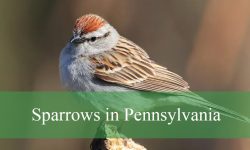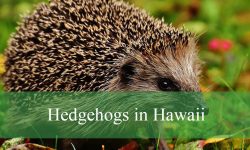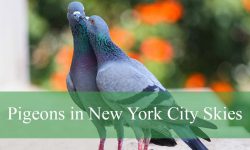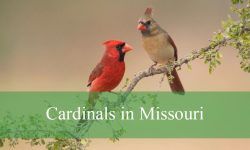At sunrise along the Florida coast, the world glows gold. Gentle waves roll toward white sand, gulls cry overhead, and far beyond the surf line, long-winged silhouettes glide just above the water’s surface. Their wingtips nearly brush the sea, moving in perfect synchronization with the rhythm of the Atlantic. Then, without warning, one bird folds its wings, plunges like a spear into the waves, disappearing in an explosion of white spray. Moments later it resurfaces, a wriggling fish clamped tightly in its bill.
This is the pelican — one of Florida’s most iconic and ancient seabirds. Seen in harbors, estuaries, mangrove forests, fishing piers, bridges, and beach towns from Pensacola to Key West, pelicans in Florida are part of the state’s living landscape. They soar above paddleboarders, perch on docks beside fishermen, and float in calm bays like patient old mariners.
Yet beneath their familiar, gentle appearance lies a world of complexity — one shaped by evolution, survival, instinct, and a remarkable partnership with the coastal waters they rule. These birds are not just photogenic fishermen. They are symbols of ecological balance, indicators of ocean health, and survivors of dramatic environmental changes.
This article uncovers the hidden truth about Florida’s pelicans — their biology, their challenges, their habits, their myths, and their extraordinary connection to the Sunshine State’s coastlines.
Meet Florida’s Pelicans
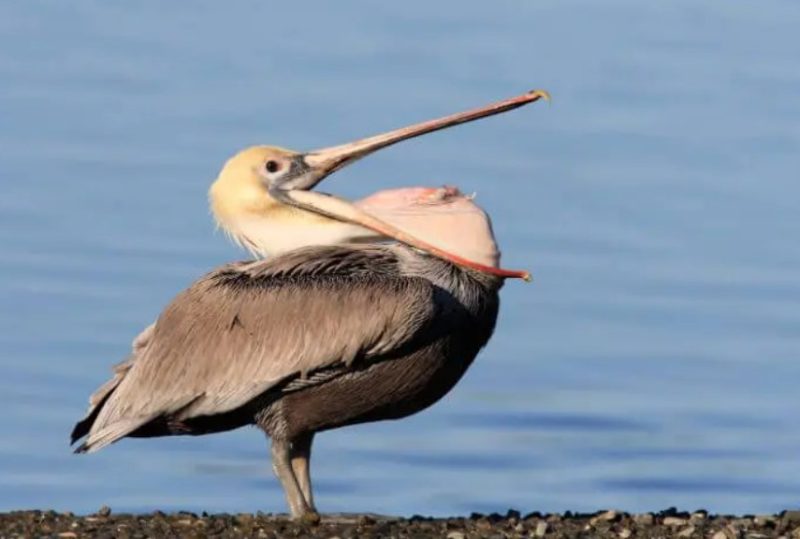
Two Species, Two Different Stories
Florida is home to two primary pelican species:
-
Brown Pelican (Pelecanus occidentalis)
-
American White Pelican (Pelecanus erythrorhynchos)
The brown pelican is a year-round coastal resident. It’s the bird Floridians see diving headfirst into surf and lining up on piers like weathered sailors.
The American white pelican, by contrast, is a winter visitor found on inland lakes, shallow marshes, and brackish coastal waters — majestic, enormous, and far more reserved than its brown cousin.
Both species fold into Florida’s ecosystems in dramatically different ways, creating a rich tapestry of pelican life across the state.
The Brown Pelican: The Daredevil of the Coast
The brown pelican is the smallest pelican species in the world, yet it is arguably the boldest. With its long bill, expandable throat pouch, and graceful silhouette, it performs the spectacular aerial dives that tourists adore.
Gliding low over waves, brown pelicans use their keen vision to spot fish near the surface. When prey is detected, they tilt their bodies, tuck their wings, and plunge downward at speeds approaching 40 mph. Their skulls and necks have evolved shock absorption structures that allow repeated impact without injury.
Found all along Florida’s coastline — from the Panhandle to the Keys — brown pelicans are emblematic of coastal life. They perch on signs, nest on mangrove islands, and fly in single-file lines at sunset like shadows sliding across the surface of the water.
The American White Pelican: The Quiet Giant
Towering nearly 5 feet tall with wingspans over 9 feet, American white pelicans are among North America’s largest birds. Unlike the brown pelican, they do not dive for fish. Instead, they work as communal group hunters, forming semicircles and herding fish toward shallow waters where they scoop them up with coordinated precision.
In Florida, white pelicans are most common in winter, especially in:
-
The Everglades
-
Lake Okeechobee
-
Merritt Island National Wildlife Refuge
-
St. Marks National Wildlife Refuge
Their soft white plumage, black wing tips, and calm, deliberate movements make them appear almost ghostlike against Florida’s blue skies. They are gentle giants, elegant and quiet — a classical contrast to the dramatic brown pelican.
Anatomy and Adaptation
The Legendary Pelican Pouch
Perhaps the most iconic feature of pelicans in Florida is their throat pouch, known as the gular pouch. It can stretch to hold several gallons of water, though they typically use it as a fishing net, not storage.
After scooping fish and water, pelicans tilt their heads downward to drain the water before swallowing prey. The pouch also helps with thermoregulation — expanding, contracting, and releasing heat in Florida’s intense sunshine.
Wings Built for Efficiency
Pelicans have enormous wings relative to their body size. This allows them to soar effortlessly on ocean breezes using minimal energy. Their ability to glide for miles without flapping makes them one of the most energy-efficient long-distance flyers among seabirds.
Brown pelicans fly low over waves to ride “ground effect,” a phenomenon that reduces drag and conserves energy. It’s the same aerodynamic principle that helps airplanes land more smoothly.
Bones Like Buoyant Architecture
Despite their size, pelicans have air-filled bones that make them remarkably buoyant. This allows them to float easily and dive without sinking too deeply. Combined with specialized air sacs beneath their skin, pelicans absorb the impact of dives that would injure other birds.
Habitat and Range Across Florida
The Coast Is Their Kingdom
The brown pelican thrives anywhere saltwater meets land. This includes:
-
Gulf Coast beaches
-
Atlantic coastlines
-
Mangrove islands
-
Jetties and piers
-
Harbors and marinas
-
Fishing piers
Their nests cluster on uninhabited islands and mangrove branches, where distance from predators increases chick survival.
Meanwhile, white pelicans favor:
-
Inland freshwater lakes
-
Coastal lagoons
-
Marshes and wetlands
-
Protected wildlife refuges
Florida’s climate, water bodies, and food availability create one of the richest pelican habitats in North America.
Behavior and Daily Life
Pelicans Are Surprisingly Social
Some birds are solitary by nature, but pelicans in Florida prefer company. They form flocks for flying, roosting, hunting, and migrating. Brown pelicans may roost together by the hundreds on sandbars and docks, while white pelicans gather by the thousands in wintering wetlands.
Their social bonds allow them to hunt more effectively, share resting locations, and communicate danger.
Group Hunting: A Pelican Tradition
The American white pelican’s cooperative feeding strategy is one of nature’s most graceful spectacles. By forming crescent-shaped groups and flapping wings lightly, they corral fish into tight schools.
Brown pelicans don’t coordinate hunts but often feed in areas where fish are plentiful. When one pelican dives, others notice and join — creating a chain reaction of spectacular plunges.
Resting, Preening, and Sunbathing
Pelicans spend a good portion of each day caring for their feathers. Preening with the tip of their bill, they spread waterproofing oils across their wings.
They also sunbathe — holding their wings partially open like cloaks — to warm themselves or dry off after diving. Along Florida’s coasts, you often see these theatrical poses on railings, rocks, and mangrove roots.
Diet and Foraging
Fish: The Heart of the Pelican Menu
Fish are the primary food source for both pelican species. Their favorites include:
-
Mullet
-
Menhaden
-
Sardines
-
Anchovies
-
Catfish
-
Minnows
-
Crustaceans (occasionally)
Brown pelicans rely on sight, targeting fish near the surface. Their diving ability allows them to reach prey other seabirds cannot.
White pelicans, by contrast, paddle delicately through shallow waters, scooping up fish with synchronized herding movements.
Opportunistic Feeding
Pelicans sometimes feed near fishing boats, docks, and cleaning stations. They quickly learn where scraps are available — though this creates risks of:
-
Human dependency
-
Entanglement in fishing gear
-
Hook injuries
Still, their opportunism shows their intelligence and adaptability.
Pelican Reproduction and Family Life
A Complex Courtship Dance
Pelican courtship involves elaborate displays:
-
Head swaying
-
Bill clattering
-
Wing stretching
-
Aerial circling
These rituals strengthen pair bonds and signal readiness for nesting.
Nests on Islands and Mangrove Forests
Brown pelicans typically nest:
-
On mangrove branches
-
On coastal islands
-
On low shrubs or sandy dunes
White pelicans nest far inland (in the western U.S.), but wintering individuals in Florida rest on islands and rafts without breeding.
Brown pelicans lay 2–3 eggs, which both parents incubate with their feet — a unique pelican adaptation.
Parenting: Teamwork in Action
Both parents:
-
Feed chicks by regurgitating fish
-
Protect the nest from predators
-
Shade chicks from Florida’s heat
Chicks grow rapidly, forming small crèches (groups of young birds) before fledging. Watching fuzzy white pelican chicks transform into sleek, juvenile gliders is one of Florida’s quiet coastal miracles.
Pelicans and Florida’s Ecosystem
Guardians of Coastal Balance
Pelicans help maintain fish population dynamics, especially baitfish. Their presence indicates healthy fish stocks and clean waters. When pelican numbers decline, it often signals environmental stress such as:
-
Pollution
-
Red tide
-
Overfishing
-
Habitat loss
They are bellwethers of ocean health — warning systems with wings.
The Threat of Red Tide and Pollution
Pelicans in Florida face dangers from harmful algal blooms. Red tide toxins accumulate in fish, making pelicans sick when they feed.
Plastic pollution, monofilament fishing lines, and oil spills can cause injuries, drowning, or feather contamination. The 1970s saw dramatic declines in pelican populations due to pesticides like DDT, but conservation efforts helped them rebound.
A Comeback Story
The brown pelican was once on the brink of extinction in the southeastern U.S. due to DDT-induced eggshell thinning. After the pesticide was banned, populations recovered dramatically.
Today, both Florida pelican species are stable — proof that conservation efforts can bring species back from collapse when supported by public awareness and legislation.
Pelicans and People
The Fisherman’s Companion
In Florida, pelicans and fishermen share a complicated relationship. Fishermen often enjoy pelican company at docks, while pelicans wait patiently for scraps.
Sometimes, pelicans beg too closely or become entangled in hooks. Wildlife groups now teach “hook removal” to anglers to reduce injuries and promote coexistence.
Pelicans as Cultural Icons
Pelicans feature in:
-
Florida coastal art
-
Beach souvenirs
-
Tourism branding
-
Folklore and regional storytelling
Their calm presence and graceful silhouettes represent the state’s connection to the sea.
Myths and Misconceptions
Myth 1: Pelicans store fish in their pouch
False. They don’t stash food — the pouch is for catching, not keeping.
Myth 2: Pelicans are clumsy
False. They are aerodynamic experts and powerful divers.
Myth 3: Pelicans steal food from fishermen
Mostly false. They take scraps only when humans make food accessible.
Myth 4: Pelicans are aggressive
False. Pelicans rarely show aggression unless protecting nests.
Myth 5: Pelicans can’t survive storms
False. They have survived hurricanes for centuries, though strong storms can temporarily disrupt populations.
Conservation Challenges
Habitat Loss
Development reduces safe nesting sites on coastal islands.
Fishing Gear Entanglement
Lines and hooks are major threats.
Pollution and Oil Spills
Feathers lose waterproofing when contaminated.
Climate Change
Rising sea levels threaten low-lying islands where pelicans nest.
Surprising and Little-Known Facts About Pelicans in Florida
-
Brown pelicans dive from heights of up to 60 feet.
-
A pelican’s pouch can stretch wider than its entire wingspan.
-
White pelicans are among the heaviest flying birds in North America.
-
Pelicans can live over 30 years in the wild.
-
They have binocular vision specialized for detecting fish underwater.
-
Pelican beaks grow colorful during breeding season.
-
White pelicans can eat up to 4 pounds of fish in a day.
-
Brown pelicans often follow dolphins to hunt fish stirred up by the pod.
-
Pelicans cool down by fluttering their throat pouch.
-
A group of pelicans is called a “squadron” or “pod.”
FAQs About Pelicans in Florida Coastlines
Are pelicans dangerous?
No, they are gentle and rarely show aggression.
Can pelicans dive in freshwater?
Brown pelicans prefer saltwater, but they can dive in brackish areas.
Do pelicans migrate?
White pelicans migrate; brown pelicans stay year-round in Florida.
Are pelicans protected by law?
Yes, under the Migratory Bird Treaty Act.
What do pelicans eat?
Mostly fish, with occasional crustaceans.
Why do pelicans fly in lines?
To conserve energy and navigate using aerodynamic alignment.
Do pelicans have predators?
Yes — raccoons, gulls, eagles, sharks (for young).
Can you feed pelicans?
No. Feeding them causes dependency and health risks.
When do pelicans breed?
Brown pelicans breed in spring and summer.
Where can I see pelicans in Florida?
Every major coastline — Clearwater, Naples, Miami, Pensacola, Daytona, the Keys.
Final Thoughts
The pelicans in Florida are more than birds — they are living anchors of the coastline, reminders of nature’s persistence and elegance. With their sweeping wings, calm presence, and ancient instincts, they connect the modern world to a timeless rhythm of tide and sky.
To watch a pelican glide over emerald waves or dive through shimmering water is to witness a story older than Florida itself — a story of survival, grace, and partnership with the sea.
Their truth is simple and profound: pelicans are guardians of the coast, symbols of resilience, and essential voices in the wild chorus of Florida’s shores.


